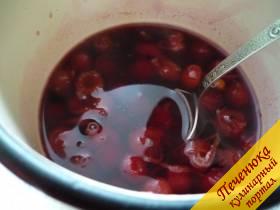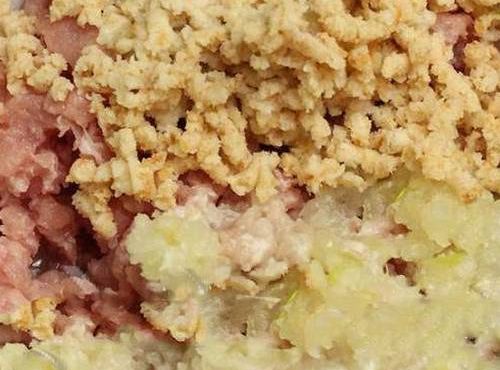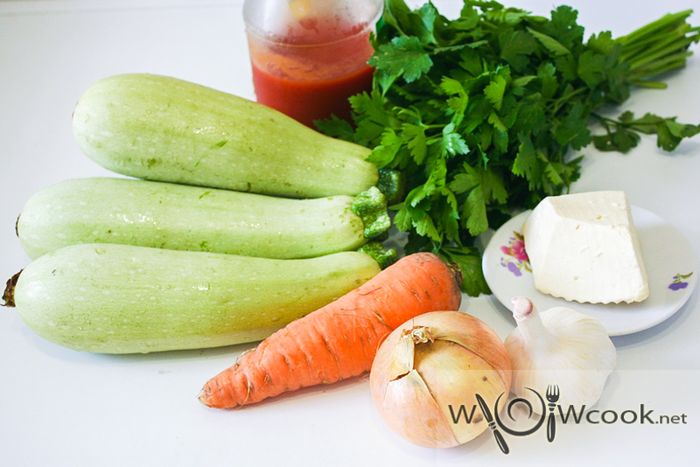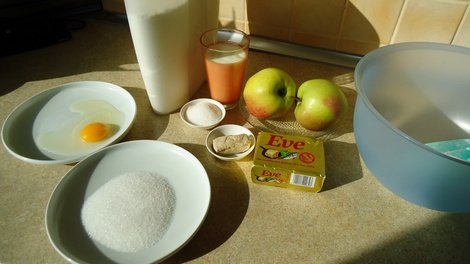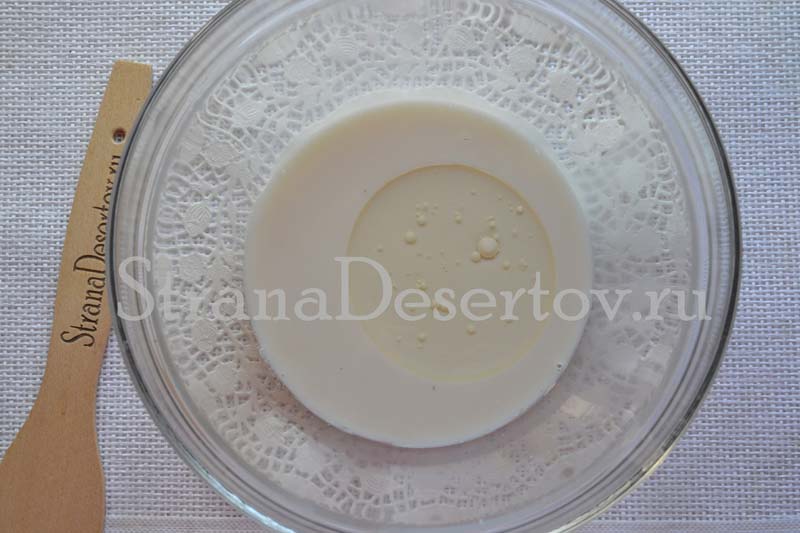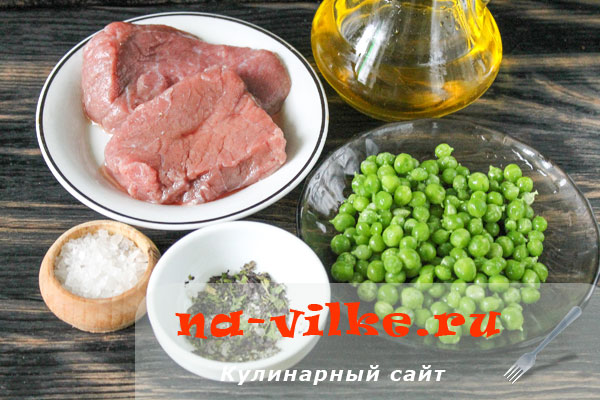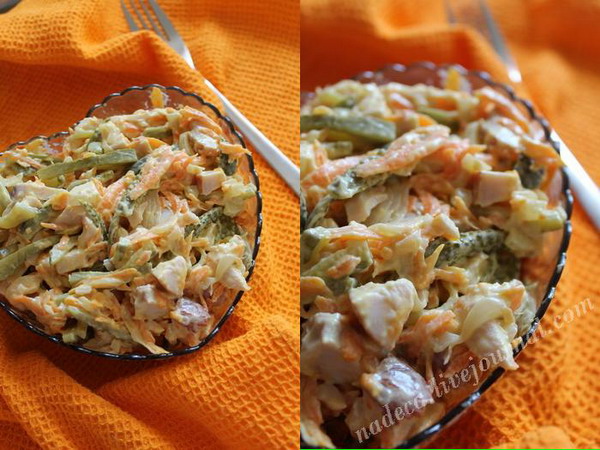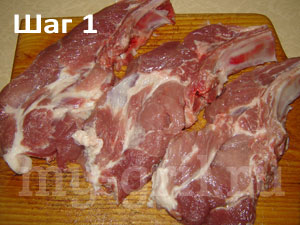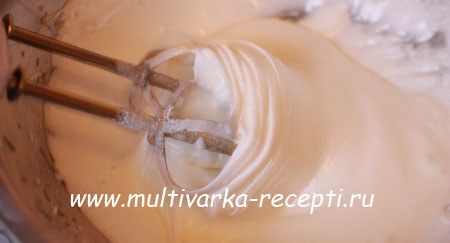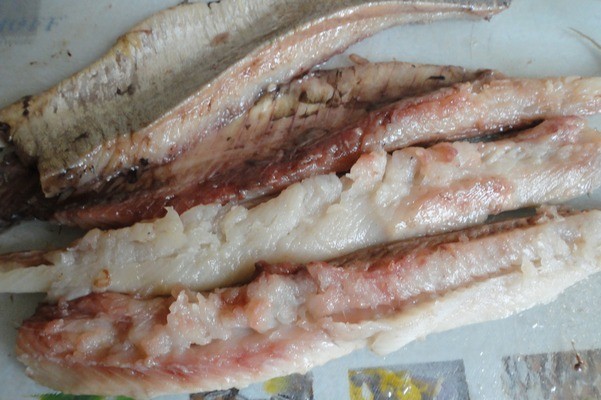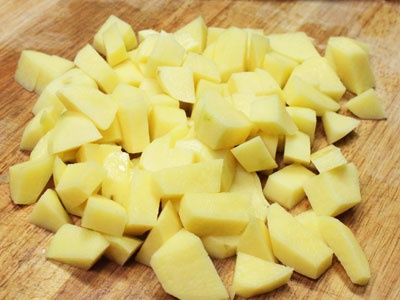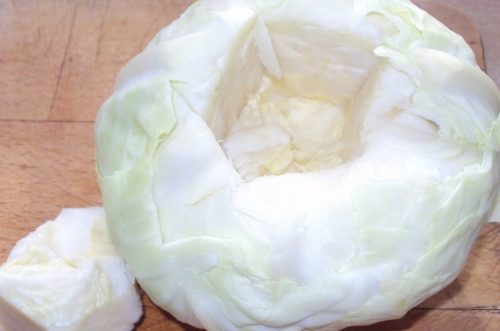Asian sauces recipes. Seven main tastes of Asian cuisine
Properly selected sauce is what what separates simple dish from a culinary masterpiece . B thanks to a wide selection asian exotic sauces at METRO, your dishes will become for all culinary secret.
SOY SAUCE
One of the pillars of Asian cuisine - soy sauce has become a complete replacement for salt. During the fermentation of beans, the fifth-tasting carrier “minds” naturally appears in it.
Seasoning for sushi or boiled rice sauce the role of soy sauce SEN SOYnot limited to. They substitute salt in vegetable and meat stews, add to soups and broths for a rich taste and beautiful color. A couple of drops of this oriental seasoning will give desserts interesting flavor notes.
CURRY
Thick Curry Paste is a Thai invention. Kari varies in color of the products that make up its composition: the sharpest is red, made from chili peppers; yellow is based on turmeric; soft green cooked from green pepper and cilantro.
Red curry paste TM Exotic Food add to meat or spicy soups. For yellow curry paste TM Exotic Food creamy taste is characteristic - with it cook chicken, potatoes, beef and seafood. Green curry paste TM Exotic Food universal and gives all dishes a characteristic fresh taste. Curry paste can be added to salads, marinades and batter for roasting chicken.
 Oyster Sauce
Oyster Sauce
A popular sauce for hot dishes in China, Vietnam and Thailand is a thick, viscous substance from oysters and vinegar boiled in soy sauce. In the taste of the sauce, mollusks are not felt at all, but there are a lot of carriers with minds.
Oyster sauce TM Exotic Food with a salty-sweet taste, they are used at the end of frying in a wok or grill pan - they are sprayed with almost finished products.
SRIRACHA
The main ingredients of bright red hot sauce are chili peppers, garlic, salt and vinegar. From the rest of the "chili" it is distinguished by a light sweet shade. Thanks to him, sriracha went beyond the spicy Thai and Vietnamese cuisine and squeezed sweet Indian sauces on the shelves of chefs.
Sauer Shriracha TM Exotic Food served as dip sauce or ketchup. To soften the pungency and add piquancy to familiar salads, it is mixed with cream, sour cream or mayonnaise. The sauce is served with fo soup, added to ramen, gazpacho or vegetable cream soup. A few drops will make the taste of marinades for meat, meat bread, pasta sauces deeper and surprise in omelet or vegetable juices.
 CHUTNEY
CHUTNEY
The recipe for chutney - spicy "jam" of fruits and vegetables, the British borrowed from the Indians. Chutney can be fresh and boiled, cooked for serving or canned. A distinctive feature of this sauce is a combination of sour and sweet tastes with hints of pungency. The classic chutney is made from mango, and in exotic sauce TM Exotic Food its taste is enhanced by pineapple. Beets, rhubarb, apples, cherries, gooseberries, carrots are also used as a base. Onions, garlic, fresh ginger and spices are added - from mustard and cinnamon seeds to cumin and cloves, and, of course, a bite.
Chutney sauce is served with ready-made meals. This is an ideal Indian sauce suitable for baked or boiled poultry. It well sets off the taste of low-fat sea fish and seafood, cheese; diversifies the taste of sandwiches, vegetable sticks and cold appetizers.
FISH SAUCE
One of the oldest sauces on the planet is prepared by fermenting small fish in sea water. Its specific smell can be loved or hated from the first breath. A powerful umami effect and a coarse fishy taste can even transform an ordinary soup.
Often tM fish sauce Exotic Food used instead of salt in curry and marinades to give an expressive taste to vegetable dishes.
Ponzu sauce
Ingredients
lemon 1 piece
lime 1 piece
orange 1 piece
soy sauce
ginger
garlic
chilli
cilantro
Cut the zest of lemon and lime, grind and send into the water so that it gives bitterness. Squeeze the juice from half an orange, half a lemon and half a lime in one container. Pour juice into a saucepan, put on heat and evaporate until thickened to concentrate the taste.
Grate unpeeled ginger and garlic, finely chop the chilli and squeeze into gruel. Pour soy sauce into a deep bowl, add chili pepper, and squeeze juice out of ginger and garlic. The boiled citrus juice is poured into the sauce, mixed and filtered through a sieve to remove all the ingredients from it. Add the zest and after 1-2 minutes remove it. Pour the sauce into the gravy boat.
Before serving, decorate the sauce with finely chopped cilantro. Ponzu sauce goes well with raw fish and chicken.
Hoisin sauce
Ingredients
soy sauce
star anise
clove
fennel seeds
cinnamon
soya paste
grape vinegar
sugar
garlic
Add to the preheated frying pan frayed star anise, cloves and half a teaspoon of fennel seeds. Warm up the spices to give a flavor. Pour the warmed spices into a mortar, add half a teaspoon of ground cinnamon and grind again.
We put the stewpan on heating, pour the soy sauce and pour the grated spices. Add 1 tablespoon of soybean paste, a little grape vinegar and a handful of sugar. Peel the garlic clove, crush it and add to the soy sauce. Mix. We filter the sauce through a sieve and pour into the gravy boat.
Hoisin sauce is used cold. Great for duck
Sweet and sour sauce
Ingredients
pineapple fresh
sweet pepper
onion
chilli
ginger
garlic
vegetable oil
tomato paste
soy sauce
water
sugar
sesame oil
sweet chili sauce
starch
vinegar
Peel the garlic and ginger. Ginger cut into small cubes, and chop the garlic. Grind a little chili pepper and transfer all the ingredients into one bowl.
Cut the onions and half the bell pepper into large pieces and transfer to a bowl.
We clear half the pineapple. Cut the core and cut into large pieces.
We prepare sugar, tomato, soy sauce, sesame oil, vinegar, sweet chili sauce. Dissolve 2-3 teaspoons of starch in cold water.
We heat the pan with the addition of vegetable oil. Add chopped garlic, ginger, chili pepper and heat, not letting it burn. There we add 3-4 tablespoons of tomato paste, a little soy sauce, 1 cup of water, 3.5 tablespoons of sugar, vinegar, 1 tablespoon of sweet chili sauce, 2-3 teaspoons of starch to thicken, pineapple and mix. Remove the sauce from the heat and add the sesame oil.
Sweet and sour sauce is served cold. It goes well with fish, chicken and vegetables.
Satay Sauce
Ingredients
coconut milk
ginger
garlic
chilli
sugar
peanut
soy sauce
fish sauce
cilantro
We put the stewpan on heating and pour coconut milk.
Peel ginger and garlic and cut into any way. Grind the chili peppers and send together with ginger and garlic to the stewpan for coconut milk. Add an incomplete tablespoon of sugar, 3-4 handfuls of salted peanuts and wait for the milk to boil. After the milk has boiled, reduce the heat, cover with a lid and cook for 5 minutes.
After 5 minutes, grind all the ingredients in a saucepan with a blender until a thick smooth consistency.
Add a little soy and fish sauce to the stewpan and mix.
Finely chop the cilantro and add to the sauce. Mix and pour into the gravy boat.
Satay sauce goes well with chicken.
Spicy thai sauce
Ingredients
lime 2 pieces
fish sauce
sugar
garlic
chilli
cilantro
Remove a little zest from the lime, cut it into thin strips, place in a bowl and pour cold water for 10 minutes.
Squeeze juice from limes and pour into a bowl. Add a little fish sauce and 2 teaspoons of sugar.
Peel the garlic clove and cut it first into thin plates, then - with straws, and then - with a small cube. Add garlic to a bowl of lime juice and mix.
We clean the chili pepper from the seeds and cut into a small cube. Shred the cilantro and send the chili and cilantro to the lime juice. Add the zest of lime, mix and pour into the gravy boat.
Spicy Thai sauce goes well with steamed fish.
from the program of Ilya Lazerson "Aerobatics"
Recently, there is absolutely no place on my shelf for various vinegars and oils - a whole battery of Asian ingredients has started up there. They did not appear all at once, gradually. First I discovered the basic ones, then I learned about new ones and bribed one thing or the other. At some point, I decided to write a “useful” post about them. Here I will briefly talk about each and how I use this ingredient. I do not pretend to be encyclopedic, but simply share my experience.
Soy sauce
This is probably the first Asian ingredient that appeared in our kitchens in the late 90s.
 If you want to understand what fermentation is, welcome to Asian cooking. Here absolutely everyone knows about this process. So soy sauce is the result of the process of fermenting soybeans, toasted grain, brine and a certain fungus. Everything mixes up, starts to ferment, in the process of fermentation a liquid appears - this is soy sauce. Different amounts of water, beans, and fermentation lead to the formation of different versions of the sauce. Also, the taste can change under the influence of various additives. Soy sauce is a mind-concentrated, the same "fifth" taste.
If you want to understand what fermentation is, welcome to Asian cooking. Here absolutely everyone knows about this process. So soy sauce is the result of the process of fermenting soybeans, toasted grain, brine and a certain fungus. Everything mixes up, starts to ferment, in the process of fermentation a liquid appears - this is soy sauce. Different amounts of water, beans, and fermentation lead to the formation of different versions of the sauce. Also, the taste can change under the influence of various additives. Soy sauce is a mind-concentrated, the same "fifth" taste.
The main thing you need to pay attention to when buying a sauce is that it should be naturally fermented.
Soy sauce is also used on its own. In addition, it is added to Asian soups, for example, marinades for meat and fish, and it is made with stir-fries. And on the basis of soy sauce, others are prepared, more complex, such as teriyaki.
How do I use soy sauce:
- For marinades for fish and meat;
- For salad dressings;
- In soups in an Asian manner;
- In hot dishes;
- For glazing meat and vegetables during baking.
Rice vinegar
 In general, rice vinegar is softer and sweeter than European ones familiar to us. If you need to replace rice vinegar with some other, you should do it in a ratio of 1 to 2. It happens in different colors - from transparent, colorless to pretty dark. There is even red rice vinegar. In addition to its intended use, as vinegar, it is often included in various dishes as an acidifier.
In general, rice vinegar is softer and sweeter than European ones familiar to us. If you need to replace rice vinegar with some other, you should do it in a ratio of 1 to 2. It happens in different colors - from transparent, colorless to pretty dark. There is even red rice vinegar. In addition to its intended use, as vinegar, it is often included in various dishes as an acidifier.
How I use rice vinegar:
- For salad dressings;
- To create complex sauces.
Oyster sauce
 One of the most beloved. Once it was made from oyster broth, and only from it. What you can buy in our stores has a much more modest composition. Usually it is sugar, salt, water, oyster essence (from concentrated oyster broth) and caramel for color. The taste has a pronounced sweet, thick texture.
One of the most beloved. Once it was made from oyster broth, and only from it. What you can buy in our stores has a much more modest composition. Usually it is sugar, salt, water, oyster essence (from concentrated oyster broth) and caramel for color. The taste has a pronounced sweet, thick texture.
One of the basic ingredients in Chinese cuisine. It goes well with meat and vegetables. Without it, popular Chinese sweet and sour meat dishes, as well as sty-fries, are impossible.
How do I use oyster sauce:
- For marinades for meat and fish;
- For sauces in hot dishes;
- In soups.
Fish sauce
 Fish - does not mean - to fish. Although, as they said in The Office Romance, there too. A lot of Asian products are obtained as a result of fermentation, this one is easy to guess from what.
Fish - does not mean - to fish. Although, as they said in The Office Romance, there too. A lot of Asian products are obtained as a result of fermentation, this one is easy to guess from what.
One of the oldest sauces in the world. Now it is widely distributed in South Asian cuisine (Philippines, Laos, Vietnam) and other Asian countries. But the ancient Greeks and ancient Romans also had their own version of fish sauce.
It is made from fermented fish in a variety of ways: from raw and dried fish, from different fish and one species - so it has many varieties. It is used as an additive during cooking and as an integral component of many sauces. Korean kimchi is also hard to imagine without fish sauce.
How do I use fish sauce:
- In hot dishes;
- For dressings and sauces.
Hoisin Sauce
 I once read in a culinary magazine or on a forum a question - what plums make Hoisin sauce from. After all, he really has a fruity, spicy smell. Of course, there are no drains in the sauce. But there are fermented soybeans, red rice and five spice seasoning.
I once read in a culinary magazine or on a forum a question - what plums make Hoisin sauce from. After all, he really has a fruity, spicy smell. Of course, there are no drains in the sauce. But there are fermented soybeans, red rice and five spice seasoning.
Especially popular and common sauce in China. There it is added to marinades for poultry and meat, as well as greased meat during cooking to obtain a beautiful glazed crust.
The most famous dish that comes with hoisin is Peking duck. With spring rolls it is also often served. In addition to Chinese, especially Cantonese cuisine, it is also popular in Vietnam. In this country, in addition to the above methods, it is also added to soups.
How I use Hoisin:
- For pickles;
- For glaze.
Mirin
 This is not even sauce, but rice wine originally from Japan. In the old days it was used like that, for its intended purpose - men drank sake, and women drank Mirin. This product is very sweet and low alcohol. It happens in different colors - both light transparent and dark.
This is not even sauce, but rice wine originally from Japan. In the old days it was used like that, for its intended purpose - men drank sake, and women drank Mirin. This product is very sweet and low alcohol. It happens in different colors - both light transparent and dark.
Wikipedia talks about three types of mirin. “Khon mirin” (true mirin) is a classic version of mirin, “sio mirin” (mirin with salt) contains alcohol only to the extent that the tax on alcohol is avoided, and “syn mirin” (new mirin) is mirin seasoning , which contains less than 1 percent alcohol, but retains the taste of classical mirin.
In Japanese cooking, it is used in fish dishes to kill the rich fish smell. It is part of marinades, salad dressings and complex sauces, such as teriyaki. The two main ingredients in teriyaki are soy sauce and mirin wine.
Those who do not drink alcohol can also use mirin, and it completely evaporates during the heat treatment.
How do I use Mirin:
- In salad dressings;
- For lubricating fish during baking;
- In marinades;
- In soups for an Asian touch.
Miso
 Miso pasta is an affordable, convenient product. The Japanese component, which is produced in different parts of the country, can be of different colors and significantly different in taste. It can be more or less salty and sweet. It is made from soybeans, wheat, rice, as well as combining different products. Naturally, applying the fermentation process.
Miso pasta is an affordable, convenient product. The Japanese component, which is produced in different parts of the country, can be of different colors and significantly different in taste. It can be more or less salty and sweet. It is made from soybeans, wheat, rice, as well as combining different products. Naturally, applying the fermentation process.
In the old days it was the main source of protein for ordinary people who could not afford anything but rice.
In addition to all of the above, miso paste is very useful, as it contains many trace elements and vitamins.
Of course, miso is put in the same miso soup, which is served in Japanese restaurants at the beginning of the meal. But its use is not limited to this, since miso is easily combined with various ingredients. The result is interesting marinades, sauces and additives to Asian dishes.
How I use miso paste:
- In the soup;
- For marinating meat before baking.
Shrimp paste
The first time you smell the shrimp paste, you can instantly lose the desire to put it in something edible. Her smell is quite intense. However, this ingredient is one of the main ones for South Asian cuisine as a whole and Thailand in particular.
It is made from small shrimps, krill, by drying and subsequent fermentation. It may be pinkish and brown, depending on the region.
It is put in a variety of dishes, in curry, in particular. By the way, during the heat treatment, the pungent smell of the paste disappears.
How do I use shrimp paste:
- Asian hot dishes.
You may like:
Stir fry with chicken and winter vegetables Miso pork  Teriyaki meat balls with sesame seeds
Walnuts, almonds, pecans, macadamia - 10 types of nuts in the kitchen
Teriyaki meat balls with sesame seeds
Walnuts, almonds, pecans, macadamia - 10 types of nuts in the kitchen
Pour the sauce into a gravy boat and serve it! It can be served with meat, and fish, and with your favorite grilled vegetables, and just vegetables! We had kebabs today! 
The sauce is really versatile and very tasty! 
Continuation of my love story))
... I saw how hard it was for my Sasha. A complete mess at work (it works a lot, they don’t pay at all!), Lack of money, relatives take out the brain every day to return home, and then my aunt and child (it's me about myself!) Fell on my shoulders !!! He only came from the army for a year, he should have walked and walked again, and here I am)) Sasha certainly did not show his mood, but I saw his sad eyes, and I just wanted to scream out of hopelessness! I was so afraid that he could not stand, that he would break, that he would leave ...
And then one day, Sasha did not come from work, did not come at night, did not come the next morning ... Then there were no cell phones, I could not find out where he was in any way, though my mother had a home phone (Sasha and I chatted for hours on him !), but I had no idea where to call, and the relationship with our parents after we left for the apartment did not add up. I could not go to his parents either, because they simply hated me! So two days passed in ignorance and tears ... And when on the third day the doorbell rang I rushed to open almost breaking my neck !!! My mother came, which I was very surprised and brought me terrible news. She received a call from the hospital and was informed that my Sasha was in intensive care, he was unconscious for two days, and when he woke up he immediately asked the nurse to call ... I’m probably selfish, but it became easier for me because he didn’t leave me, and instead of this, another feeling of anxiety began to creep into the soul: like in a hospital, why, what happened !!!? I rushed to him like scalded. Of course, they didn’t let me into the intensive care unit, the nurse somehow inaudibly explained that they brought him at eleven o'clock in the evening, badly beaten, unconscious and in outer clothing (((I was just in shock! I didn’t want to leave, but the nurse reassured that he was now I came to my senses, my condition stabilized, but they still won’t let me in until they transferred me to the ward. The only thing I could do then was to tell my sister how much I love him !!! It took five long days until Sasha was transferred from intensive care I will not describe my fainting the state when I saw him, one bruise! It turned out that Sasha, as usual, was late from work and he met several scumbags who earned money in such a difficult time for everyone, they beat him, took off his sheepskin coat, mink hat and left to freeze (on the street the end of January) ... I found his random passerby, God grant him health and salvation !!!
I went out to my sasha, after discharge, he could not work for some time, he had to quit his job and we had no choice but to bow to my parents. We talked, consulted and decided that we will live with them, but we did not live there for long, Sasha quickly found a new and well-paid job, and we again went to the apartment!
Like any family, we wanted a common child, but it is not fate that is visible. I started having problems in a feminine way. One day, severe pain in the lower abdomen, bleeding, hospital, a complicated operation and the doctors’ sentence “you will no longer have children” ... I cried for a week, and Sashulya reassured me as much as possible: - “Well, dear, don’t cry we have a daughter! " Having discharged from the hospital, I decided that I have no right to break his life, he should have a real family with kids. At first I just asked, let's get out, then she screamed and hysterical ... I withstood all my tantrums, listened to all my arguments ... I didn’t leave !!! Since then a lot of water has flowed ... There were quarrels and reconciliations, and how many times we were going to diverge with him 
